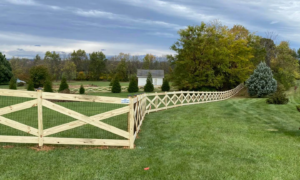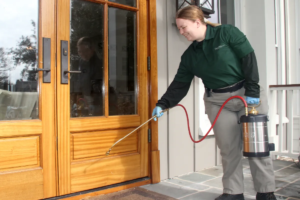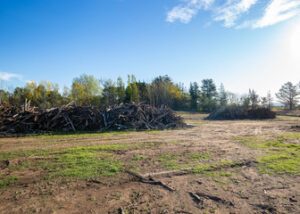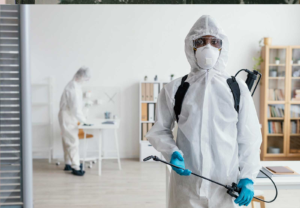Gutter Repair Murfreesboro TN and maintenance is an important part of maintaining your home’s value. It helps keep water away from the foundation, which will prevent potential damage and deterioration.

Gutter problems can quickly escalate into costly issues if they are not addressed promptly. Recognizing the common signs of gutter damage and repairs can help you ensure that your gutter system functions properly.
If sections of your gutter are pulling away from your house, you will need to re-secure them. This is a quick and relatively easy task to do with some basic tools. Start by making sure the area is free of debris and that you have a safe work surface. Use a ladder to examine the problem and, if necessary, remove any loose sections of gutter or hangers. Once you have cleaned out the gutters, re-secure them to the fascia using new hangers and ensuring that the fastener heads penetrate the rafter tails of your house.
Another common gutter repair issue is leaks. Leaks are often caused by loose fasteners, cracks, or holes in the gutter. It is important to check your gutters regularly for any of these problems and to address them as soon as you notice them.
Depending on the severity of the leak and its location, you may be able to fix it with a silicone sealant or, for larger gaps, a gutter patch. It is important to clean the leaky section of the gutter thoroughly and dry it before applying the sealant or patch.
Gutters are attached to your home with various types of fasteners, including nails or screws. Over time, these fasteners can loosen, causing your gutters to pull apart from your house. This can lead to water leaking over the back of the gutter and down the fascia board, causing damage and rot.
Gutter spikes are an old method of mounting and hanging gutters, but they eventually wear out and come loose. They also create a hole in the wood that is behind your gutter. Over time this will become bigger and bigger, allowing rain to flow into the house and cause damage.
If you have a gutter with loose spikes, replace them with galvanized sheet metal screws. The screws will not only hold the gutters securely in place, but they will also protect the gutter from rust and help prevent the screws from becoming loose again. If your gutter has loose or missing downspouts, you can secure the downspouts to the house by screwing aluminum straps near the upper and lower ends of the downspout.
Sagging Gutters
One of the most obvious signs that your gutters need repair is if they’re starting to sag. This can lead to water overflow and potential damage to your home. Often, sagging is caused by debris buildup, but it can also be a sign of other issues like loose gutter hangers or even damage to the fascia boards. Regardless of the cause, it’s important to take care of the problem right away before it gets worse.
Gutter systems are designed to slope downwards to ensure that water flows towards downspouts and not into your home’s siding or foundation. When this sloping isn’t correct, it can result in water accumulating in sections of the gutter and eventually spilling over or pooling in the area underneath. This can cause damage to planters, flower beds and other areas that are below the gutters.
It’s important to check the gutters for signs of sagging on a regular basis to ensure that they’re still functioning correctly. If you do notice that they’re sagging, it’s a good idea to climb up on the ladder and inspect them for possible causes of the problem. You’ll need to examine the hangers and brackets that hold your gutters in place as well as any other supports such as downspout extensions. In most cases, sagging is caused by excess weight, which is a result of the buildup of debris like pine needles, leaves, twigs and other items. This can block water flow and increase the weight of your gutter system, causing it to start to sag over time.
Another common cause of sagging is improper installation techniques. This can include using too few hangers or supports to brace the gutters, incorrect gutter sloping or pitches that prevent proper water flow towards downspouts and poor sealing/caulking. In most cases, sagging can be fixed by tightening loose fasteners or replacing them with new ones. If the problem is more serious or involves significant work at heights, it’s a good idea to contact a professional for assistance. For the most part, though, sagging gutters can be easily repaired with the help of a few simple tools and a bit of time on a ladder.
Separation Between Sections
A gutter system serves an important function in protecting a home from structural damage and water overflow. When a homeowner notices water dripping from the roof or walls, it is often an indication that there are problems with the gutters themselves or along their joints.
Gutter sections are typically joined together by a seam that uses either metal or roofing cement to create a watertight seal. If this joint fails, it can cause leaks that lead to roof damage and other issues.
To fix a leaky gutter seam, first remove any debris or leaves that may be blocking the joint. Next, scrub down the area to remove rust or corrosion. Scrub the areas with a wire brush and wash them with a cleaning solution. Make sure to clean the entire area that will be repaired so that dirt or old caulk does not interfere with the new sealant.
Next, locate the seam that needs to be repaired and remove the screws that hold it together. Carefully separate the sections and scrape away any caulk that is still attached. Once the joint is cleaned, place a fresh bead of sealant and press the sections back together. Finally, use a utility knife to remove any excess sealant that squeezes out during application.
Leaking gutter joints are a serious problem that should only be addressed by a professional. Working on a ladder or roof can be dangerous, and even experienced DIYers should not attempt gutter repair without proper training and access to essential tools and premium products.
Deformed Gutters
The weather and the elements can wreak havoc on gutters, leaving holes or cracks that water can get through. Keeping up with your gutter maintenance can help you identify these areas early and repair them before they become bigger problems that require more costly repairs or replacements.
Gutter sections that are sagging or pulling away from the house can also signal other issues. Often, this is an indication that the material of the gutters has warped or twisted due to extreme weather conditions. In some cases, you may be able to straighten out the gutter section by adding additional hangers that will better distribute the weight of the entire system. However, if the damage is significant or the gutter material is deteriorating, it will need to be replaced.
Another common gutter issue is dents or bending of the gutters, especially in older sections or near connections with downspouts. This can cause the gutter to no longer function properly, allowing water to fall off the sides of the gutter instead of directing it down and away from the home. This can cause problems like water damage to landscaping, the foundation or even the home itself.
In some cases, dents can cause the gutter to rust or break, which will require replacements or additional costly repairs to correct. These types of issues can be more severe in metal gutters that are exposed to the elements and the constant impact of debris from storms or falling branches and limbs.
While not as common, if you see watermarks on your walls or rotting areas in the landscape it is likely that there are leaks from your gutter system. Leaks can also lead to more serious problems in your home, including mold and wood rot. If you see any of these signs it is best to contact a professional for gutter repair as soon as possible. If you are not able to repair your gutters it is recommended that they be replaced to avoid further damage and costly repair bills down the road. Gutter repair is one of the most important and simple steps you can take to protect your home and landscape from water damage.








